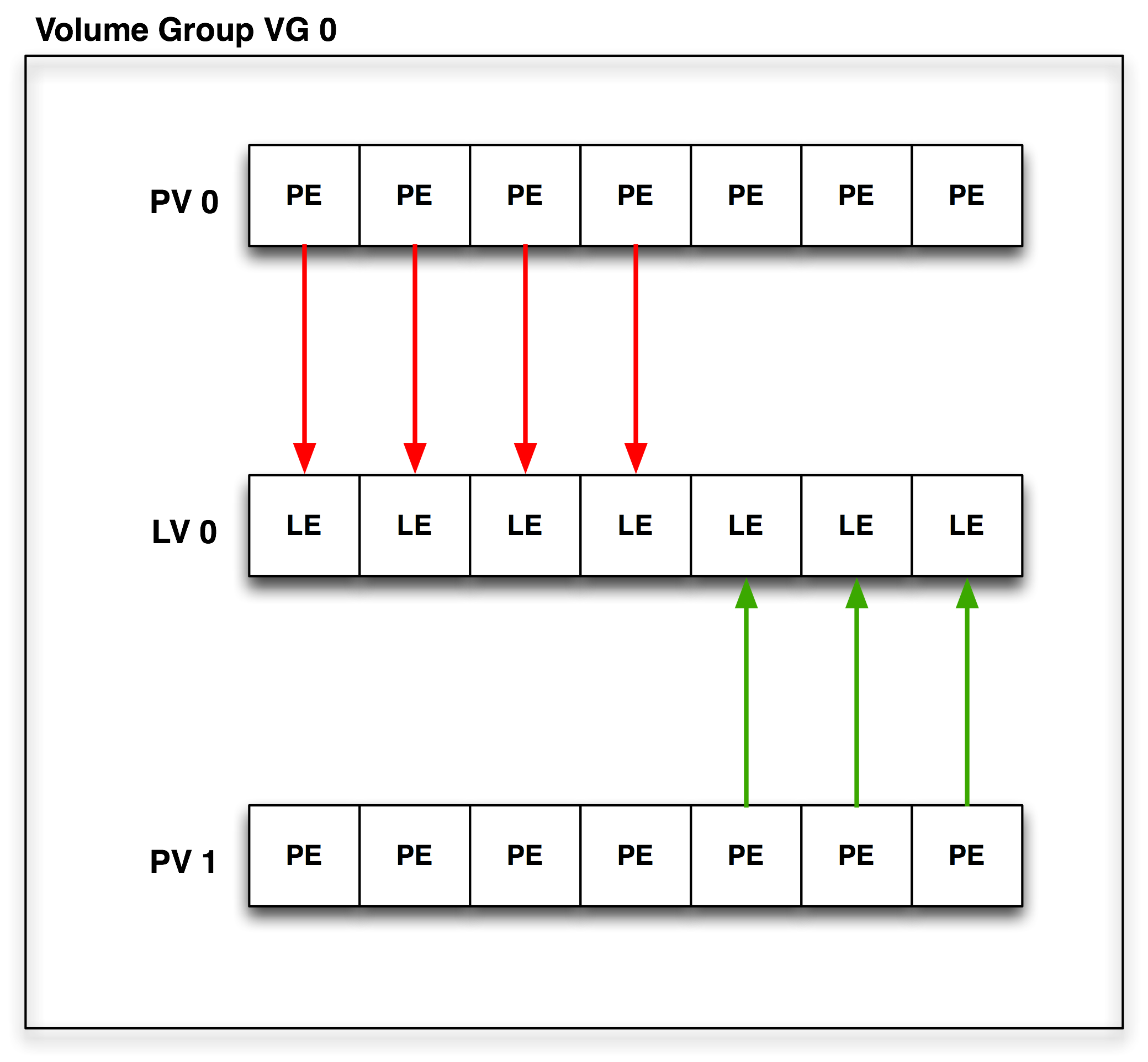

3rd Party software may allow to mount certain kinds of LVM setups.
EXTERNAL VOLUME MANAGER WINDOWS
If dual-booting, note that Windows does not support LVM you will be unable to access any LVM partitions from Windows.Requires (multiple) daemons to constantly run. Additional steps in setting up the system, more complicated.



Note: Logical volumes are accessible at both /dev/ VolumeGroupName/ LogicalVolumeName and /dev/mapper/ VolumeGroupName-LogicalVolumeName. │ /dev/MyVolGroup/rootvol │ /dev/MyVolGroup/homevol │ /dev/MyVolGroup/mediavol │ │ Logical volume1 15 GiB │ Logical volume2 35 GiB │ Logical volume3 200 GiB │ Volume Group1 (/dev/MyVolGroup/ = /dev/sda1 + /dev/sda2 + /dev/sdb1): │ Partition1 50 GiB (Physical volume) │ Partition2 80 GiB (Physical volume) │ Think of PEs as parts of PVs that can be allocated to any LV. Physical extent (PE) The smallest contiguous extent (default 4 MiB) in the PV that can be assigned to a LV. they can be directly formatted with a file system. LVs are Unix block devices analogous to physical partitions, e.g. Logical volume (LV) "Virtual/logical partition" that resides in a VG and is composed of PEs. Volume group (VG) Group of PVs that serves as a container for LVs. Examples: a hard disk, an MBR or GPT partition, a loopback file, a device mapper device (e.g. Physical volume (PV) Unix block device node, usable for storage by LVM. Virtual partitions allow addition and removal without worry of whether you have enough contiguous space on a particular disk, getting caught up fdisking a disk in use (and wondering whether the kernel is using the old or new partition table), or, having to move other partitions out of the way. With LVM you abstract your storage and have "virtual partitions", making extending/shrinking easier (subject to potential filesystem limitations). Logical Volume Management utilizes the kernel's device-mapper feature to provide a system of partitions independent of underlying disk layout. Logical Volume Manager (LVM) is a device mapper framework that provides logical volume management for the Linux kernel. Create root filesystem snapshots with LVMįrom Wikipedia:Logical Volume Manager (Linux):.dm-crypt/Encrypting an entire system#LUKS on LVM.dm-crypt/Encrypting an entire system#LVM on LUKS.


 0 kommentar(er)
0 kommentar(er)
